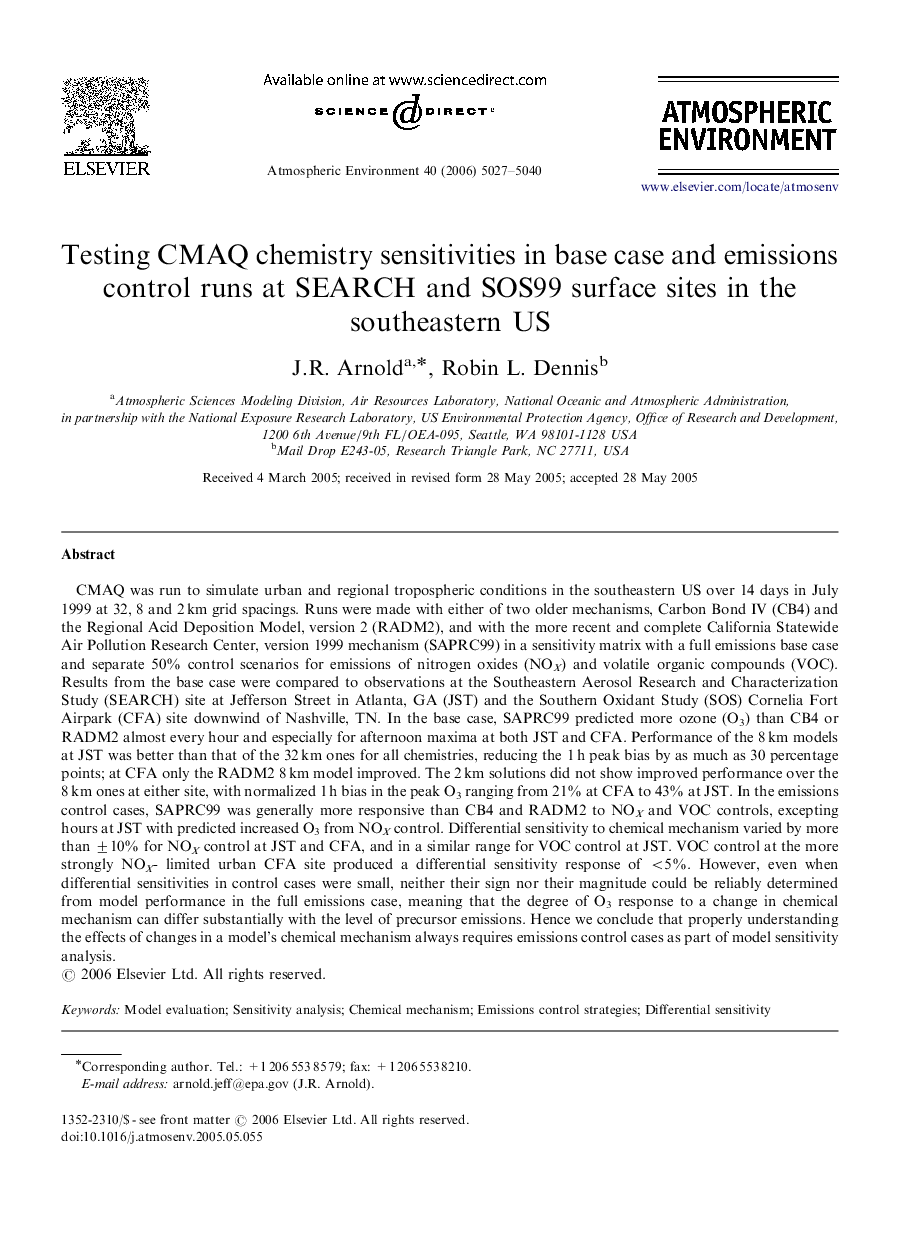| کد مقاله | کد نشریه | سال انتشار | مقاله انگلیسی | نسخه تمام متن |
|---|---|---|---|---|
| 4444501 | 1311242 | 2006 | 14 صفحه PDF | دانلود رایگان |

CMAQ was run to simulate urban and regional tropospheric conditions in the southeastern US over 14 days in July 1999 at 32, 8 and 2 km grid spacings. Runs were made with either of two older mechanisms, Carbon Bond IV (CB4) and the Regional Acid Deposition Model, version 2 (RADM2), and with the more recent and complete California Statewide Air Pollution Research Center, version 1999 mechanism (SAPRC99) in a sensitivity matrix with a full emissions base case and separate 50% control scenarios for emissions of nitrogen oxides (NOX) and volatile organic compounds (VOC). Results from the base case were compared to observations at the Southeastern Aerosol Research and Characterization Study (SEARCH) site at Jefferson Street in Atlanta, GA (JST) and the Southern Oxidant Study (SOS) Cornelia Fort Airpark (CFA) site downwind of Nashville, TN. In the base case, SAPRC99 predicted more ozone (O3) than CB4 or RADM2 almost every hour and especially for afternoon maxima at both JST and CFA. Performance of the 8 km models at JST was better than that of the 32 km ones for all chemistries, reducing the 1 h peak bias by as much as 30 percentage points; at CFA only the RADM2 8 km model improved. The 2 km solutions did not show improved performance over the 8 km ones at either site, with normalized 1 h bias in the peak O3 ranging from 21% at CFA to 43% at JST. In the emissions control cases, SAPRC99 was generally more responsive than CB4 and RADM2 to NOX and VOC controls, excepting hours at JST with predicted increased O3 from NOX control. Differential sensitivity to chemical mechanism varied by more than ±10% for NOX control at JST and CFA, and in a similar range for VOC control at JST. VOC control at the more strongly NOX- limited urban CFA site produced a differential sensitivity response of <5%. However, even when differential sensitivities in control cases were small, neither their sign nor their magnitude could be reliably determined from model performance in the full emissions case, meaning that the degree of O3 response to a change in chemical mechanism can differ substantially with the level of precursor emissions. Hence we conclude that properly understanding the effects of changes in a model's chemical mechanism always requires emissions control cases as part of model sensitivity analysis.
Journal: Atmospheric Environment - Volume 40, Issue 26, August 2006, Pages 5027–5040